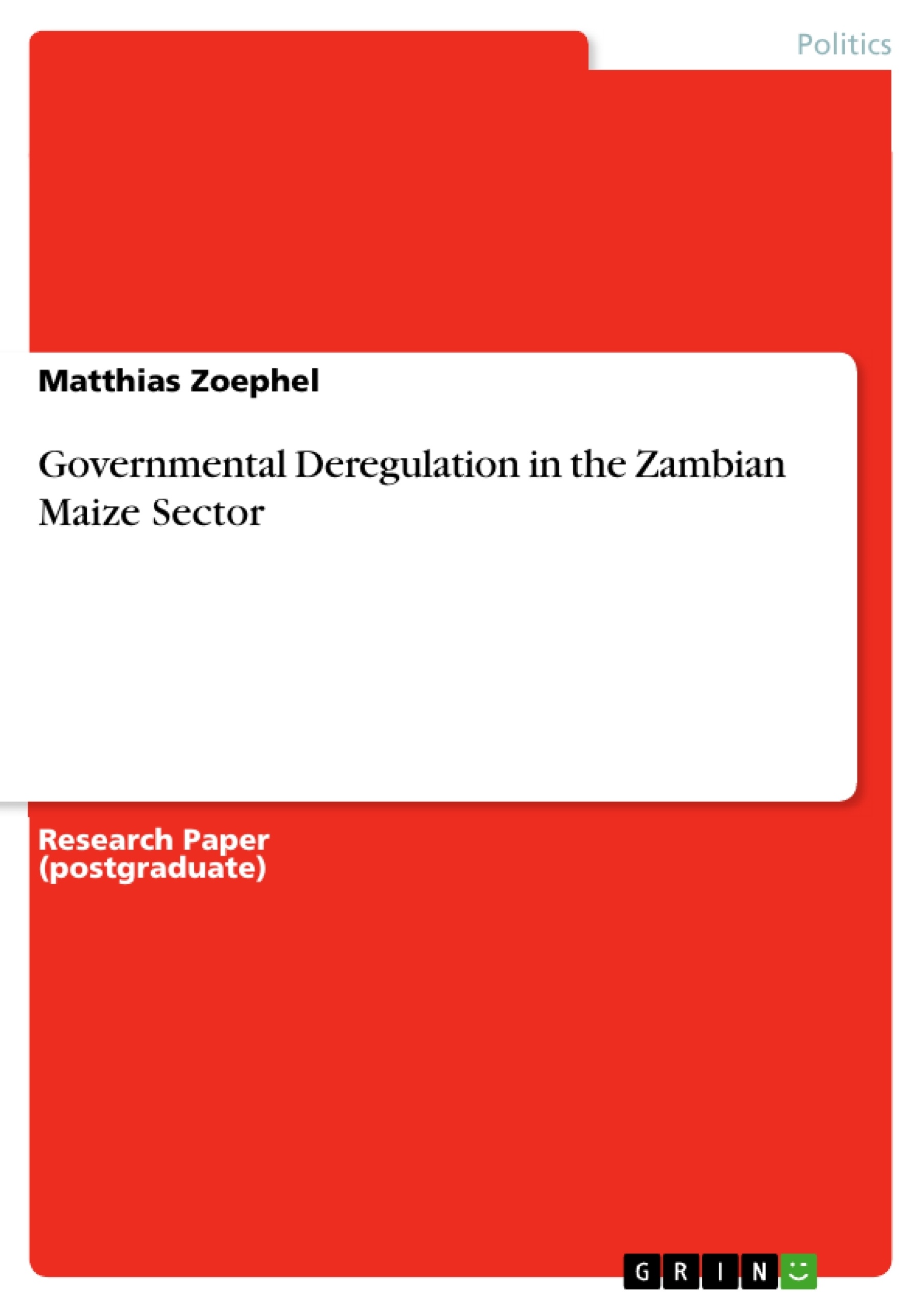The following paper will indicate the interventions taken by the Zambian government in the Zambian maize sector. The agricultural sector in Zambia makes up 20 percent of the country’s GDP, employs 67 percent of Zambia’s total labor force and is the main source of livelihood for poor people in Zambia (Dixon et. al. 2001). The agricultural contribution to the GDP is mainly attributed by rural small-scale farmers who make up 90 percent of all Zambian farmers and own nearly about two thirds of the agricultural land (OECD 2009). More than 70 percent of the entire agricultural area planted is under maize. Since agriculture contributes to the GDP to such a great extend and maize is by far the greatest crop planted, the performance of the maize sector is a very decisive indicator of how well Zambia is economically doing. Further, poverty is mainly existent in rural areas and as rural small-scale farmers make up almost the entire output of maize, maize is thus also an important indicator of rural poverty. The maize sector is at the same time the most deregulated sector in Zambia with a deregulation percentage of greater than 80 percent. Maize policies affect a large percentage of the population and policies can and are used to provide the government with strategic advantages for self-interest independent of whether such policies have a positive impact on the in highly poverty living rural population. This research paper will first examine in section two how maize became such a powerful crop by looking back into Zambian history. Section three will explain the deregulation policies that are currently in place in detail before section four will give an outlook into the future where the maize sector is heading to, accompanied with suggestion in how the maize sector must change in order to contribute to poverty reduction on a sustainable base. Section five will summaries and conclude this report.
Inhaltsverzeichnis (Table of Contents)
- Glossary
- Introduction
- History of the Zambian Maize Sector
- Colonial Time
- Independence
- From Regulation to Liberalization to Regulation
- Deregulation Activities
- Inland-Deregulations
- VAT Status
- Government Maize Purchases from farmers
- Pan-territorial and Pan-seasonal Pricing
- Input Subsidies
- Provincial Levies (fees)
- Trade Regulations
- Export Regulations
- Import Regulations
- Inland-Deregulations
- Discussion and Outlook
- Conclusion
- References
Zielsetzung und Themenschwerpunkte (Objectives and Key Themes)
This research paper investigates the Zambian government's interventions in the maize sector. The agricultural sector, crucial to Zambia's economy and a significant source of livelihood for the poor, is dominated by maize production. The maize sector is highly deregulated, exceeding 80%, with policies impacting a large portion of the population. The paper examines the historical development of the maize sector, starting from the colonial era and progressing through independence and liberalization periods. It then delves into the specific deregulation policies currently in place, ultimately providing an outlook on the future of the maize sector and suggesting improvements for poverty reduction.
- The historical development of the Zambian maize sector
- The impact of government interventions on the maize sector
- The current deregulation policies in place in Zambia
- The future of the maize sector and its role in poverty reduction
- The importance of maize as a strategic crop in Zambia's history and development
Zusammenfassung der Kapitel (Chapter Summaries)
The introduction establishes the importance of the maize sector in Zambia's economy and its role in poverty reduction. It outlines the paper's structure, which will examine the historical context of maize production, the current deregulation policies, and an outlook on the future of the sector.
The chapter on the history of the Zambian maize sector traces the origins of maize production back to the colonial era, highlighting the role of British colonial policy in promoting maize cultivation for the benefit of the copper mining industry. The chapter then explores the period after independence, where maize continued to be a strategic crop for poverty reduction, with government interventions such as input subsidies and above-market price purchases.
The chapter on deregulation activities provides a detailed overview of the policies currently in place, examining both inland deregulation measures like VAT status and government maize purchases, as well as trade regulations for export and import.
Schlüsselwörter (Keywords)
The main keywords and focus topics of this research paper include the Zambian maize sector, agricultural deregulation, government interventions, poverty reduction, colonial history, independence, liberalization, input subsidies, price control, export and import regulations, and the role of maize as a strategic crop in Zambia.
- Quote paper
- Matthias Zoephel (Author), 2011, Governmental Deregulation in the Zambian Maize Sector, Munich, GRIN Verlag, https://www.grin.com/document/171131



